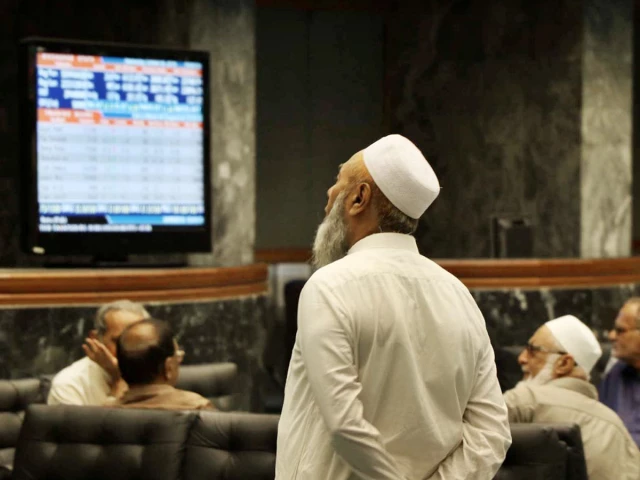Business
Peloton posts bullish holiday forecast, betting that shoppers will spend big on new product lineup

Peloton on Thursday posted its second profitable quarter in a row as it released strong guidance for the crucial holiday shopping season, banking on its relaunched product assortment to drive growth.
The connected fitness company posted a surprise net income of $13.9 million in the three months ended Sept. 30, compared with a loss of $900,000 a year earlier.
For the current quarter, Peloton’s strongest for hardware sales, the company is expecting revenue to be between $665 million and $685 million, a slight increase from the year-ago period and largely better than Wall Street expectations of $665 million, according to LSEG.
Peloton also raised its full-year adjusted EBITDA outlook and is now expecting it to be between $425 million and $475 million, up $25 million from its previous outlook on both ends. Much of that forecast is ahead of analyst expectations of between $400 million and $450 million, according to StreetAccount.
Shares jumped about 11% in extended trading Thursday.
Despite the good news, Peloton is still dealing with issues from its past. Earlier on Thursday, it said it was initiating yet another recall from its early product lineup. The Consumer Product Safety Commission said the company was recalling 833,000 of its original Bike+ devices after receiving reports that the seat post can break and detach during a ride – the same issue that prompted a recall of its base Bike model in 2023.
“We have received a small number of reports of an original series Bike+ seat post breaking during use. As of today, we are aware of three such incidents,” Peloton CEO Peter Stern said on the company’s earnings call Thursday.
Peloton’s latest recall cost the company $13.5 million during the quarter reported Thursday, contributing to a 0.3 percentage point decline in its gross margin.
For its first fiscal 2026 quarter reported Thursday, Peloton beat analyst expectations on the top and bottom lines.
Here’s how the fitness company did in its first fiscal quarter compared with what Wall Street was anticipating, based on a survey of analysts by LSEG:
- Earnings per share: 3 cents vs. 0 cents expected
- Revenue: $551 million vs. $540 million expected
Sales dropped to $551 million, down about 6% from $586 million a year earlier.
Under the direction of Stern, who took the helm in January, the connected fitness company has been finalizing its cost cuts and turning its attention back to growth now that it’s back to regularly generating free cash flow and operating profitably.
“Our intent is to go well beyond [cardio connected fitness]… we’ve got strength, we’ve got mental, mental wellbeing, nutrition and hydration and sleep and recovery,” Stern said. “We are focused on growth, but the growth needs to be profitable … both in top line growth as well as increased margins associated with that business as well.”
Last month, Peloton relaunched its product assortment, introduced a commercial equipment line and raised prices for both subscriptions and hardware ahead of the holiday shopping season.
The revamped assortment, touching its bike, rowing machine and treadmill products, features an AI-powered tracking camera, speakers, a 360-degree swivel screen and hands-free control, among other new features.
“Our launch of an entirely new product lineup with the cross training series, is a great reason for us to talk to our members and nonmembers alike,” Stern said.
Peloton is betting consumers will be willing to spend big on the products for flashy holiday gifts, either for themselves or a loved one. But just over a month into the launch, it remains unclear how they’re performing. The company’s first fiscal quarter ended the day before the new products were launched.
Across the retail industry, the personal electronics category has been under pressure.
While Peloton operates in a category of its own, shoppers have been pulling back on other big-ticket items and being more careful about where their dollars are going in an unsteady economic environment.
After Peloton’s last recall, the company said at the time that it saw higher-than-expected membership churn and costs as a result.
– CNBC’s Luke Fountain contributed to this report
Business
Job seekers use AI for cover letters; employers turn to AI-led interviews — both are equally miserable, here’s why – The Times of India

Turned to artificial intelligence (AI) to help you stand out during the job process, but got rejected in the first round? Or are you a hiring manager who relied on AI to frisk through applications to select the best candidate, but ended up with not what you quite envisioned?The answer lies in the approach itself. Relying on artificial intelliegnce for job application might be doing you more harm than good.The growing use of artificial intelligence in recruitment is reshaping how Americans search for work, just as the country’s labour market shows signs of slowing. From automated interviews to AI-written cover letters, technology is now a part of almost every stage of the hiring process. But is it working? In 2025, more than half of organisations surveyed by the Society for Human Resource Management reported using AI tools to recruit workers. At the same time, almost one-third of ChatGPT users turned to the OpenAI chatbot for help with job applications. Yet recent research indicates that candidates who rely on AI during the application process are actually less likely to be hired, even as employers struggle to cope with a flood of applications. “The ability (for companies) to select the best worker today may be worse due to AI,” Anais Galdin, a researcher at Dartmouth told CNN Business. Galdin and Jesse Silbert of Princeton University examined tens of thousands of cover letters submitted on Freelancer.com, a job listing platform and found that after the launch of ChatGPT in 2022, cover letters became longer and more polished. However, employers placed less importance on them, making it harder to distinguish strong candidates from the wider pool. As a result, hiring rates dropped, and so did average starting wages, CNN reported. “If we do nothing to make information flow better between workers and firms, then we might have an outcome that looks something like this,” Silbert said, referring to the study’s findings.
A negative cycle
As application volumes rise, companies are increasingly automating interviews as well.According to a survey by recruitment software firm Greenhouse conducted in October, 54% of US job seekers said they had taken part in an AI-led interview. While virtual interviews became common during the pandemic in 2020, many employers now use AI systems to conduct interviews, without necessarily removing subjectivity from hiring decisions. “Algorithms can copy and even magnify human biases,” said Djurre Holtrop, a researcher who studies the use of asynchronous video interviews, algorithms and large language models in hiring.“Every developer needs to be wary of that,” CNN cited the expert. Daniel Chait, chief executive of Greenhouse, said the growing use of AI by both applicants and employers has created a negative cycle. “Both sides are saying, ‘This is impossible, it’s not working, it’s getting worse,’” Chait told CNN.
What’s next?
Despite these concerns, adoption of the technology continues with one estimate projecting that the market for recruitment technology will grow to $3.1 billion by the end of this year. At the same time, resistance is mounting from lawmakers, labour groups and workers worried about discrimination. Liz Shuler, president of the AFL-CIO labour union, described AI-driven hiring as “unacceptable”. “AI systems rob workers of opportunities they’re qualified for based on criteria as arbitrary as names, zip codes, or even how often they smile,” Shuler said in a statement to CNN. Several US states, including California, Colorado and Illinois, are introducing new laws and regulations aimed at setting standards for the use of AI in hiring. However, a recent executive order signed by US President Donald Trump raised questions about the future of state-level oversight. Samuel Mitchell, a Chicago-based employment lawyer, said the order does not “preempt” state law but adds to the “ongoing uncertainty” around regulation. He added that existing anti-discrimination laws still apply, even when companies use AI systems, and legal challenges are already emerging. In a case supported by the American Civil Liberties Union, a deaf woman is suing HireVue, an AI-powered recruitment company, alleging that an automated interview failed to meet legal accessibility standards. HireVue denied the claim, telling CNN that its technology reduces bias through a “foundation of validated behavioral science”. Even with these challenges, more and more AI is getting hiring access. New tools have made resume screening more sophisticated, potentially helping some candidates who may have been overlooked. But for those who value personal interaction, the shift has been unsettling. Jared Looper, an IT project manager in Salt Lake City, Utah, who previously worked as a recruiter, recently underwent an AI-led interview during his job search. He described the experience as “cold”, and said he initially hung up when contacted by the automated system. Looper said he worries about job seekers who have yet to adapt to a hiring environment where appealing to algorithms has become essential. “Some great people are going to be left behind.”
Business
India-Nepal Trade Poised To Double In Next Five Years: Report

New Delhi: Strengthening business linkages and sustained investment flows between India and Nepal are expected to drive bilateral trade into a new growth phase, with volumes likely to double by 2030, according to an article in Nepalese media.
Bilateral trade remains the most visible and measurable pillar of India–Nepal economic relations, reflecting both geographic proximity and deep-rooted interdependence. India accounts for over 64 per cent of Nepal’s total trade, underscoring its centrality to Nepal’s external economic engagement and supply chains. In FY 2024–25, total bilateral trade reached approximately USD 8.7 billion, reaffirming India’s position as Nepal’s largest trading partner by a wide margin.
India’s exports to Nepal stood at about USD 7.4 billion, dominated by petroleum products, machinery, vehicles, pharmaceuticals, food items, and construction materials, which are critical to Nepal’s consumption and infrastructure needs. Nepal’s exports to India, valued at nearly USD 1.3 billion, mainly include electricity, agricultural products, iron and steel items, and manufactured goods.
This robust trade structure underscores both the extent of economic integration and the significant potential for diversification, value addition, and more balanced growth of Nepal’s export basket in the coming years. With growing business and investments, the trade trajectory is expected to enter a new phase, with bilateral trade doubling over the next five years, according to the article in the Nepal Aaja news portal.
The article also highlights that India–Nepal bilateral investments reflect a deepening economic partnership anchored in geographical proximity, historical trust, and growing strategic convergence. Indian companies constitute the largest source of foreign direct investment in Nepal, accounting for roughly 30–35 per cent of Nepal’s total FDI stock.
Cumulative Indian investment is estimated at USD 750–800 million, with operational investments of nearly USD 670 million spread across more than 150 Indian ventures. These investments span key sectors such as hydropower, manufacturing, banking, insurance, telecommunications, cement, tourism, education, and hospitality, making India a critical driver of Nepal’s industrialisation and services-sector expansion.
Indian public and private enterprises have played a particularly transformative role in Nepal’s hydropower sector by combining capital, technology, and assured power off-take arrangements, thereby strengthening Nepal’s energy security while creating long-term commercial returns for Indian firms. Indian banks and insurance companies have contributed to financial deepening and stability, while joint ventures in manufacturing and tourism have generated employment, skills, and local value addition.
This investment synergy is reinforced by India’s broader development partnership initiatives, which support infrastructure creation, cross-border connectivity, and capacity building, thereby lowering investment risks and enhancing economic integration. Together, investment flows and development finance are knitting the two economies into a closely interconnected economic space with shared long-term interests, the article points out.
Energy cooperation has emerged as a transformative pillar of India–Nepal relations, redefining Nepal’s role in the regional economy. Nepal possesses vast hydropower potential, estimated at over 40,000 MW of economically viable capacity. In recent years, concerted efforts by both governments have enabled Nepal to transition from a net importer of electricity to a growing exporter.
In fiscal year 2024–25, Nepal exported approximately NPR 17–18 billion (about USD 130 million) in electricity, with the majority sold to India. Long-term power trade agreements envisage Nepal exporting up to 10,000 MW of electricity to India over the coming decade.
This energy partnership provides Nepal with a stable source of export revenue while supporting India’s clean energy transition and regional grid stability. The integration of power markets has also positioned India as a transit country for Nepal’s electricity exports to third countries, further enhancing regional economic cooperation, the article added.
Business
Christmas spirit offered ‘right through the year’

Caitlin Klein,in Jersey, St Helierand
Julia Gregory,in Jersey
 Chris Craddock/BBC
Chris Craddock/BBCA charity which supports vulnerable people in Jersey says it has “the Christmas spirit right through the year”.
The Grace Trust which helps between 700 to 750 people a year struggling with poverty, loneliness or addiction issues said it was seeing “a much wider range” of people from all layers of society, including more older people needing community support.
General manager Vinni Jones said the charity aimed to put a smile on people’s faces from its drop-in base at Lewis Street in St Helier.
It helped 500 people at the food bank every year and also ran singing, art and Saturday lunches.
‘Just come down’
He said there were extra festive goodies at the food bank and 92 people recently sat down to an “absolutely brilliant” Christmas meal at St Paul’s Centre with 20 volunteers on hand to help out.
Entertainment was provided by Fiddler’s Green and the trust’s Parklife choir.
Mr Jones said they saw more people at Christmas because it can be a challenging time.
“Just come down, knock on the window and we’ll give you what we’ve got.”
‘Offer understanding’
He explained that “we can offer a lot more than simply the food and Christmas goodies” and said people are often surprised at all the activities on offer and encouraged them to have a go.
He said the charity also had a fund to help younger mums and links with other agencies so it can offer toy vouchers at Christmas.
Support was also available year round for struggling islanders.
“It’s just a matter of being able to offer that understanding and to talk about January, talk about February for them. We’ll still be here for you,” Mr Jones said.
The government has also reminded islanders about mental health support over Christmas.
There is 24 hour support available from the Adult Mental Health crisis team, on 445 290 and online support from Together All.
-

 Fashion1 week ago
Fashion1 week agoIndonesia’s thrift surge fuels waste and textile industry woes
-

 Tech1 week ago
Tech1 week agoT-Mobile Business Internet and Phone Deals
-

 Business1 week ago
Business1 week agoBP names new boss as current CEO leaves after less than two years
-

 Sports1 week ago
Sports1 week agoPKF summons meeting after Pakistani player represents India in kabaddi tournament
-

 Entertainment1 week ago
Entertainment1 week agoIndia streamlines visa rules in boost for Chinese professionals
-

 Sports1 week ago
Sports1 week agoUWCL grades for all 18 teams: Leuven get A+; Barça an A-, PSG fail
-
Sports5 days ago
Alabama turned Oklahoma’s College Football Playoff dream into a nightmare
-

 Entertainment1 week ago
Entertainment1 week agoRadiation fears rise after cracks found in $2 billion Chernobyl shield











